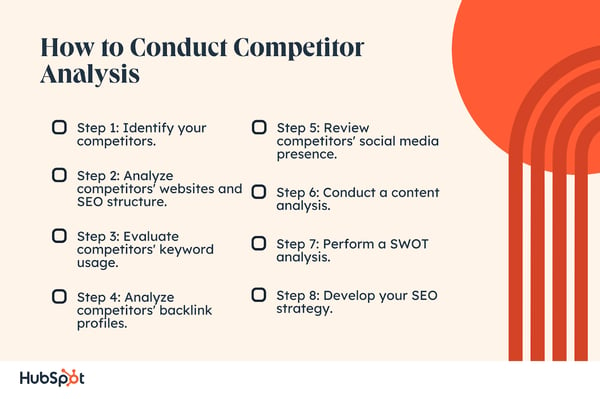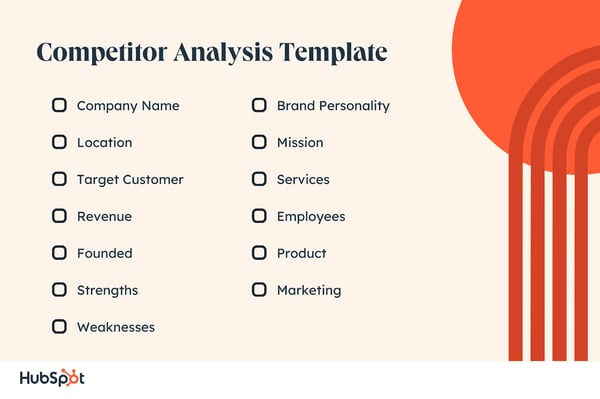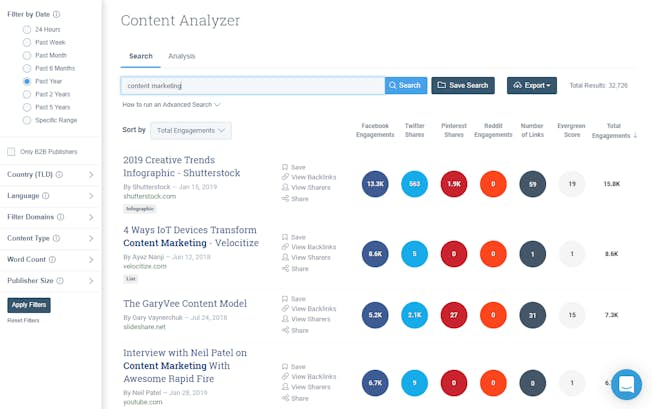Unveil the secrets to dominating your competition in search rankings with our comprehensive guide to SEO competitive analysis strategies.

Image courtesy of via DALL-E 3
Table of Contents
Welcome to the world of SEO, where websites strive to climb the ladder and reach the top spots on search engine results pages. In this digital age, understanding SEO (Search Engine Optimization) is paramount for online success. But what sets apart the winners from the rest? That’s where competitive analysis comes in. By peeking into what your competitors are doing, you can discover valuable insights to enhance your SEO strategy and emerge victorious.
What is SEO?
SEO is like a magic spell that helps websites attract more visitors by appearing higher up in search results. Imagine you’re searching for your favorite video game online. SEO is what makes sure the website selling that game pops up as one of the top choices on your screen.
What is a Competitive Analysis?
A competitive analysis is like being a detective in the digital world. It involves investigating what your competitors are up to, from the keywords they use to the content they create. By studying their tactics, you can learn what works well in the digital realm and apply those strategies to your own website to outshine the competition.
Why Combine SEO with Competitive Analysis?
By marrying SEO with competitive analysis, you unlock a treasure trove of secrets to propel your website forward. It’s about understanding your rivals, learning from their successes, and crafting a smarter strategy to catapult your website to the top of the search results. So, are you ready to dive deep into the world of SEO and competitive analysis? Let’s get started!
Identifying Your Competitors
Identifying your competitors is a crucial step in executing a successful SEO competitive analysis. Knowing who your competition is and understanding their strategies can provide valuable insights for improving your own SEO efforts.
Who Are Your Competitors?
When identifying your competitors, it’s essential to look at businesses or websites that operate in the same industry or niche as yours. These are the main players you will be benchmarking yourself against to enhance your SEO performance. Competitors can range from direct competitors offering similar products or services to indirect competitors targeting the same audience with a different approach.
Tools to Identify Competitors
There are simple tools available to assist you in identifying your competitors. Performing a basic Google search using relevant keywords related to your business can unveil who ranks highly in your industry. Additionally, online market analysis tools can provide a clearer picture of the competitive landscape, helping you pinpoint key players in your field.
Analyzing Competitors’ Keywords
Understanding your competitors’ keywords is crucial for building a strong SEO strategy. By analyzing the keywords they are ranking for, you can gain valuable insights into what is working for them and potentially uncover new opportunities for your own website. Let’s delve into how you can effectively analyze competitors’ keywords to elevate your SEO game.
Finding Competitor Keywords
There are several methods and tools available to help you discover the keywords that your competitors are ranking for. Tools like SEMrush, Ahrefs, or even Google Keyword Planner can provide valuable data on the keywords driving traffic to their websites. By analyzing this information, you can identify relevant keywords in your industry or niche.
Identifying High-Value Keywords
Not all keywords are created equal. Some keywords may have higher search volumes, while others may be more competitive. It’s essential to identify high-value keywords from your competitors’ list that align with your goals. Look for keywords with decent search volume, low competition, and relevance to your content. Targeting these keywords can help improve your search engine rankings and drive more organic traffic to your site.
Evaluating Backlink Profiles
Backlinks play a crucial role in determining the authority and credibility of a website in the eyes of search engines. Understanding your competitors’ backlink profiles can provide valuable insights that can be used to enhance your own SEO strategy.

Image courtesy of blog.hubspot.com via Google Images
What Are Backlinks?
Backlinks, also known as inbound links, are links from other websites that direct traffic to your site. Search engines like Google consider backlinks as a vote of confidence in the quality and relevance of your content. The more high-quality backlinks you have, the more authority your site is perceived to have.
Analyzing Competitors’ Backlinks
One way to gain an advantage in SEO is by analyzing the backlink profiles of your competitors. By examining the websites that link back to your competitors, you can identify potential opportunities to acquire high-quality backlinks for your own site.
Tools like Ahrefs, Moz, and SEMrush can help you uncover the backlinks that are driving traffic to your competitors’ websites. Look for backlinks from reputable and relevant sources, as these are more likely to positively impact your site’s search engine rankings.
Additionally, consider the anchor text used in backlinks, as this can affect how search engines interpret the relevancy of your site to specific keywords. By studying your competitors’ backlink profiles, you can gain valuable insights into which sites are worth reaching out to for potential backlink opportunities.
Investigating Competitors’ Content Strategies
When we talk about investigating competitors’ content strategies, we are delving into the world of what kind of content your rivals are putting out there. Let’s explore why this is important and how it can help you fine-tune your own content game.
Types of Content
Competitors may be using a variety of content types to engage with their audience. This can include blog posts, videos, infographics, podcasts, and more. By examining the types of content your competitors are producing, you can get insights into what resonates with your shared target audience.
Content Quality and Engagement
It’s not just about the quantity of content; quality matters too. Look at the competitors’ content to see if it is well-researched, informative, and engaging. Check for metrics like shares, comments, and likes to gauge the level of engagement their content is receiving. By understanding what works well for your competitors, you can tailor your own content strategy to boost engagement and attract more visitors to your site.
Assessing Technical SEO Aspects
When it comes to SEO, technical aspects play a crucial role in determining the success of a website. Let’s dive into some key technical SEO elements to assess when analyzing your competitors.

Image courtesy of blog.hubspot.com via Google Images
Site Speed
Site speed refers to how quickly a website loads its content and pages. It is essential for providing users with a smooth and efficient browsing experience. Search engines like Google also prioritize fast-loading websites in their rankings. To check your competitors’ site speed, you can use tools like Google PageSpeed Insights or GTmetrix. By analyzing their site speed, you can identify areas for improvement in your own site to enhance user experience and SEO performance.
Mobile-Friendliness
In today’s mobile-driven world, having a mobile-friendly website is no longer optional—it’s a necessity. A mobile-friendly site is one that displays properly on mobile devices, such as smartphones and tablets, without compromising user experience. To see if your competitors’ sites are mobile-friendly, you can use Google’s Mobile-Friendly Test tool. If their sites are optimized for mobile viewing, it indicates they are keeping up with current user preferences and search engine algorithms. Ensuring your own website is mobile-friendly is crucial for attracting and retaining mobile users, as well as improving your SEO ranking.
By evaluating these technical SEO aspects of your competitors’ websites, you can gain valuable insights to enhance your own site’s performance and boost your overall SEO strategy. Remember, staying on top of technical optimizations is key to maintaining a competitive edge in the digital landscape.
Monitoring Competitors’ Social Media Presence
In today’s digital age, social media plays a vital role in a company’s online presence. By observing how your competitors utilize social media, you can gain valuable insights to enhance your own strategies.
Social Media Platforms
When analyzing your competitors, take note of the social media platforms they are active on. Popular platforms like Facebook, Twitter, and Instagram are commonly used for engaging with audiences and promoting content.
Engagement Metrics
Monitoring competitors’ social media engagement is crucial. Look at metrics such as likes, shares, comments, and followers to gauge the effectiveness of their strategies. High engagement levels indicate a strong connection with their audience.
Taking Action and Implementing Insights
After conducting a thorough SEO competitive analysis, it’s time to put your findings into action. By implementing insights gained from studying your competitors, you can enhance your own SEO strategy and boost your website’s visibility. Here’s how you can take concrete steps towards SEO success:

Image courtesy of digitalmarketinginstitute.com via Google Images
Setting Goals
First and foremost, it’s essential to establish clear and attainable goals based on the insights gathered from your competitive analysis. Whether it’s improving keyword rankings, increasing organic traffic, or enhancing user engagement, setting specific objectives will provide direction for your SEO efforts.
Creating an Action Plan
With your goals in mind, the next step is to develop a detailed action plan that outlines the steps you need to take to achieve them. This plan should include specific tasks, timelines, and responsible individuals to ensure accountability and progress tracking.
By following a structured action plan derived from your competitive analysis, you can make informed decisions that align with your SEO objectives and outperform your competitors. Remember, implementing insights is an ongoing process that requires regular evaluation and adjustment to stay ahead in the competitive digital landscape.
Conclusion
In this blog post, we delved into the world of SEO (Search Engine Optimization) and competitive analysis to uncover the key strategies needed for success. By understanding these concepts and applying them effectively, you can elevate your website’s visibility and attract more visitors.
Competitive analysis plays a crucial role in shaping your SEO strategy, as it allows you to identify your competitors, analyze their tactics, and leverage this knowledge to your advantage. By closely examining your competitors’ keywords, backlink profiles, content strategies, technical SEO aspects, and social media presence, you can gain valuable insights that will help you stay ahead in the online landscape.
Remember, the data you gather from competitive analysis should not just sit idle. It should be used to inform your own SEO strategy, setting clear goals and creating actionable plans based on the findings. Implementation is key to seeing tangible results and improving your website’s performance.
By incorporating competitive analysis into your SEO approach, you are better positioned to achieve success in the competitive digital arena. Stay proactive, be adaptive, and continuously refine your strategies to stay ahead of the curve. SEO success is within reach with the right tools and mindset.
So, roll up your sleeves, dive into the world of competitive analysis, and watch as your website climbs the ranks in search engine results. Remember, knowledge is power, and in the dynamic realm of SEO, staying informed and proactive is the key to winning the game.
Want to turn these SEO insights into real results? Seorocket is an all-in-one AI SEO solution that uses the power of AI to analyze your competition and craft high-ranking content.
Seorocket offers a suite of powerful tools, including a Keyword Researcher to find the most profitable keywords, an AI Writer to generate unique and Google-friendly content, and an Automatic Publisher to schedule and publish your content directly to your website. Plus, you’ll get real-time performance tracking so you can see exactly what’s working and make adjustments as needed.
Stop just reading about SEO – take action with Seorocket and skyrocket your search rankings today. Sign up for a free trial and see the difference Seorocket can make for your website!
Frequently Asked Questions (FAQs)
What is the First Step in SEO Competitive Analysis?
The first step in SEO competitive analysis is to identify who your main competitors are in the same industry or niche. By understanding who you are up against, you can gain valuable insights into their strategies and tactics.
How Often Should I Analyze Competitors?
It is recommended to analyze your competitors regularly to stay updated on their activities and strategies. Depending on your industry and the level of competition, conducting a competitive analysis every few months could be beneficial for optimal results.
What Tools Can Help with Competitive Analysis?
There are several user-friendly tools available that can assist you in various aspects of competitive analysis. Tools like SEMrush, Ahrefs, and SpyFu can help you analyze competitors’ keywords, backlink profiles, and content strategies effectively.







